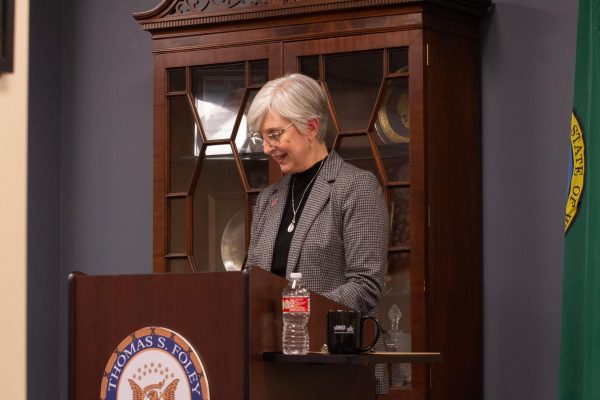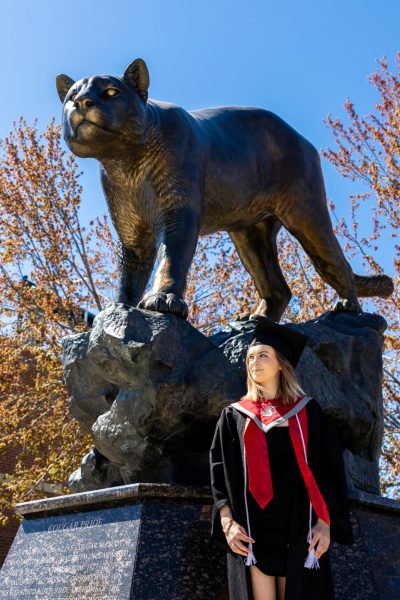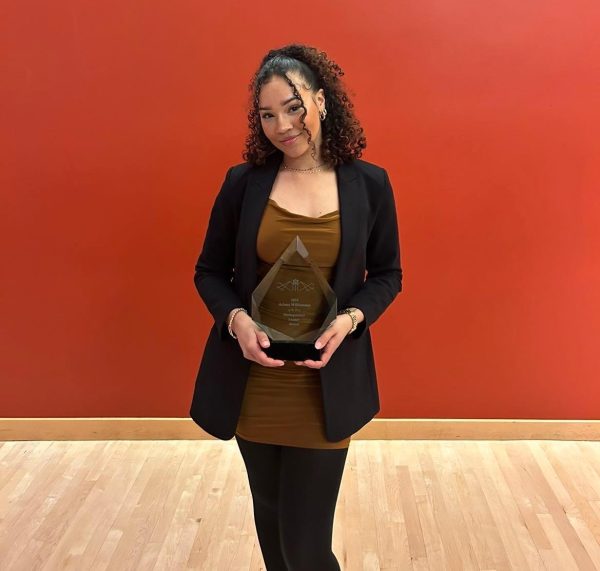Student food waste at 5 percent
Students wasted about 750,000 pounds of food during the last school year, or about 1.5 ounces per dining hall transaction.
July 20, 2016
WSU students wasted on average just less than 1.5 ounces each time they purchased food in a dining hall over the last school year, totaling nearly 750,000 pounds.
Of this amount, about 672,000 pounds traveled from dining halls to the campus compost facility. Leftover food from the kitchens and students, as well as other compostable supplies, is then made into compost which can be sold.
Dining Services Director Gary Coyle said this amounts to 7 percent of food wasted. Current software cannot distinguish between kitchen and consumer waste, but he estimates about 2 percent comes from the kitchen, leaving about 5 percent to students.
“We eat with our eyes,” Coyle said. “We tend to take more than what we really need.”
The university offers an a la carte program in which students pay for individual food items. Coyle said compared to all-you-care-to-eat dining programs, this produces less waste because students are less likely to take too much food.
On the kitchen’s end, Coyle said Dining Services repurposes as much food as possible in other meals before sending the rest to be composted. Many food options are also cooked to order to avoid unnecessary leftovers, and dining halls analyze student food waste to see if the food can be improved.
“If we get below 1 percent,” he said, “we would do everything we could to even get below that.”
Coyle said WSU was one of the first universities to develop a compost facility, and it also led the market in establishing an a la carte program after receiving customer feedback in favor of it.
During Alive! Summer Orientation sessions and other summer conferences, dining is all-you-care-to-eat. However, dining halls don’t provide trays so students are unable to take more food than they can carry, which reduces waste.
As a public university, WSU’s food is a state resource and it can be difficult to give excess to food banks. Coyle said the university is in the process of looking at Washington Administrative Codes to find ways to help organizations such as these.
One way is through food recovery organizations like The Campus Kitchens Project, which collects food waste in university dining halls and supplies it to those in need. Director Laura Toscano estimated that about half the project’s 53 university partners are public universities.
“Part of the battle might be saying that the value of that food at that point is zero,” she said, “so why don’t we redistribute it instead of composting it.”
Forty percent of food in the U.S. is wasted each year, and Toscano said universities are large contributors to this. WSU purchased approximately $6 million of food in the 2015-2016 school year.
But even if the university’s food is off limits, she said students could use university dining facilities to compile waste from grocery stores, farmer’s markets and other organizations throughout the community and donate it to food banks.
“Legislation definitely plays a large part in facilitating the growth of the movement,” she said, “but there’s always something that a university can do to help … regardless of the local situation.”


















